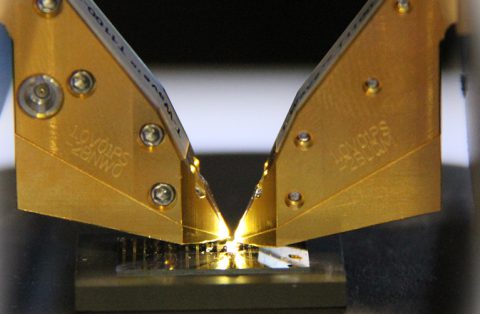Research into new materials and semiconductor technology
is pushing existing test frequency boundaries to the terahertz (THz) extremes.
THz frequencies will be utilized by new applications for materials research, wider
communication bandwidths, medical imaging, military and aerospace, and other
emerging technologies.
Over the past several years, we have seen a revolution in
THz applications. Advances in materials research and process technologies provide
new and higher power sources at these tremendously high frequencies. The
potential of THz advanced physics research and commercial applications have
already been demonstrated. Terahertz technology is an extremely attractive
research field, with interest from diverse sectors of the market and several
recent major technical advances have greatly extended the potential of THz
systems.
Until recently, THz technologies were bulky and expensive
systems used only for radio astronomy and lab applications. Today, the
technical progress achieved makes it possible for THz technologies to be
commercialized in numerous markets and for various applications.
- Astronomy
– THz can assist astronomers in scanning the universe. Telescopes based in
space or even land-based telescopes assuming they are at very high altitudes or
based in very dry locations to scan between 100 GHz and 1 THz frequencies for
obtaining images from outer space.
- Internet
of Things (IoT) – According
to Cisco, annual global IP traffic will reach 4.8 zettabytes by the
year by 2022. Traffic from wireless and mobile devices will account for 71
percent of total IP traffic by 2022. As the demand for higher data rates
increases, so does the need for a higher frequency band for being able to
transmit huge amounts of data to address consumers’ hunger for ever-increasing
data usage.
- Chemical
Fingerprinting – One of the first imaging applications using THz is
chemical finger printing. With this application, we can scan over a range of
frequencies, different materials or packages or objects and detect what is
inside them without destroying the object or without having to open the
packaging. THz could be used to detect illegal drugs hidden in packages or on
people. Another use of chemical fingerprinting is detecting explosives or
weapons on people, in cars or in packaging or in trash bins by the side of the
road. The idea here is to source THz signal crossing a range of frequencies and
look at the reflected signal coming from the object that can be used for detecting
weapons and explosives and identifying their unique composition. So by looking
at the signature of different materials you could tell whether SEMTEX, TNT, or
RDX explosives hidden on a person or in a package.
- Medical
Imaging –Unlike an x-ray, THz is non-ionizing and far less hazardous for imaging
human tissue, flesh and even dental use. It provides a higher resolution than
x-ray and gives the ability to tell the difference in soft tissues so it is a
great early detection for cancer cells as well as detecting cavities and issues
with enamel layers with human teeth.
Significant progress has been made in terahertz band
(300-3000 GHz) circuit fabrication, and continued growth in terahertz
applications requires the availability of quality test
and measurement equipment. Robust and calibrated on-wafer
measurements of planar millimeter and sub-millimeter wave devices can
significantly reduce the effort required to characterize wafers while
increasing the accuracy of the measurement by eliminating errors and effects
associated with fixtures.
Be sure to check out our T-Wave
family of probes, and learn more about comprehensive THz probing
solutions made available through our MeasureOne
technology collaboration.
